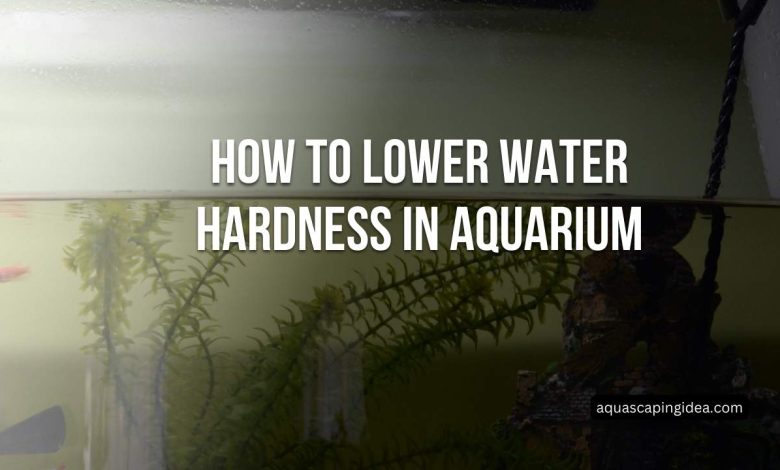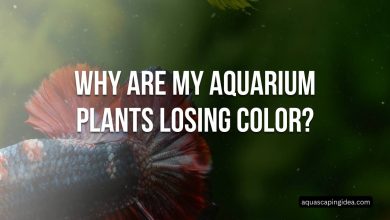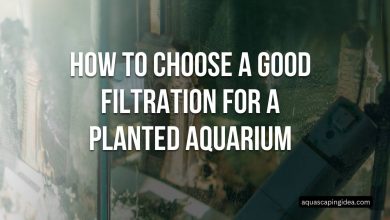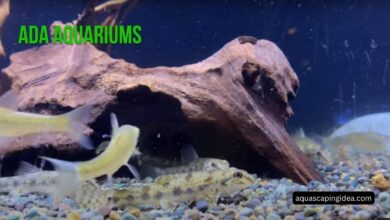How To Lower Water Hardness In Aquarium?

In the captivating world of aquariums, maintaining ideal water parameters is essential for fish health. Water hardness, the dissolved mineral concentration predominantly calcium and magnesium, requires close monitoring. Too little or too much hardness endangers fish through stress, disease, even death. Lowering hardness intricately involves understanding its impact and your fish. This guide fully explains hardness’ effects and techniques for moderating it. Follow the strategies to configure your aquarium for maximum fish welfare. Ensuring suitable hardness through diligent adjustments fosters thriving communites of finned and shelled residents.
Water Hardness
Water hardness plays an important role in our aqueous environments. While soft waters contain fewer dissolved minerals, hard waters showcase a higher level of solubilized solutes lending themselves to varied applications. It is prudent we comprehend the notion of hardness and its impact underwater prior to investigating procedures to diminish the construct. Typically, hardness is evaluated either in degrees Germane or constituent parts per million. Soft waters maintain low mineral substance concentration contrasted with hard waters possessing an augmented presence of solved geologic remains.
The Impact of Water Hardness on Aquarium Life
Maintaining appropriate water hardness levels is crucial for the well-being of your aquatic inhabitants. The water chemistry must provide balanced minerals for each species diverse needs, whether softer alkaline conditions preferred by freshwater shrimp or harder alkaline water essential for African cichlid breeding success. Improper hardness brings numerous stresses that threaten the delicate ecosystem.
Osmotic Stress:
Drastic fluctuations in water hardness can cause osmotic stress, severely disrupting the delicate equilibrium of mineral exchange between the aquatic inhabitants and their habitat.
Shell and Bone Development:
For invertebrates like shrimp and snails, as well as some bony fish, water of sufficient hardness is absolutely essential for proper shell and skeletal formation, as it supplies the requisite calcium and magnesium ions.
pH Fluctuations:
The hardness of water and its pH levels are inextricably intertwined. Softer waters lean towards acidity more often than not, while harder waters generally incline towards alkalinity. Maintaining a stable pH is imperative for the health and well-being of aquatic creatures under human care.
Plant Growth:
Aquatic plants have a range of water hardness preferences, with some species flourishing in softer conditions while other vegetation demands mineral-rich liquid for prosperous photosynthesis and uptake of minerals.
Techniques for Lowering Water Hardness
Given the significance of water hardness levels, several approaches can be taken to soften it in your fish containment vessel. Occasionally a single long sentence is complemented by a flurry of shorter statements.
Reverse Osmosis (RO) and Deionization (DI)
Reverse Osmosis (RO) systems and Deionization (DI) processes are highly effective methods for removing dissolved minerals from water, resulting in purified water that is soft and ideally suited for aquariums. These technologies work through a multi-step approach: first, water is forced through a semi-permeable membrane during RO to filter out many dissolved ions, followed by DI which further strips away any ions remaining, yielding ultrapure H2O with minimal hardness.
Peat Moss and Driftwood
Peat moss and slowly disintegrating driftwood are natural alternatives for gradually lowering the hardness levels within an aquarium over time. As these organic materials decompose underwater, they leach out humic acids which bind to dissolved minerals in the water, decreasing its hardness through a chemical reaction. However, monitoring pH is essential with peat moss because it is acidic and can reduce the tank’s pH if overused.
Chemical Water Softeners
For quicker and more precise modification of water hardness, chemical water softeners offering ion-exchange resins that substitute calcium and magnesium cations with sodium ones can be employed, effectively softening the water through an ionic swap. These synthetic products demand caution in application though, as they risk altering other water parameters beyond just hardness and may harm sensitive fish species if water chemistry shifts too drastically.
Water Changes and Remineralization
Regular water changes with softer water can gradually lower the overall hardness in your aquarium. However, this method requires care, as drastic changes in water parameters can stress your aquatic inhabitants. To mitigate this, you may need to remineralize the new water to match the existing conditions more closely.
Mineral-Absorbing Resins and Filters
Specialized resins and filters designed to remove minerals from water can be an effective solution for lowering hardness. These products typically contain ion-exchange resins that absorb calcium and magnesium ions, leaving behind softer water. Regular maintenance and replacement of these resins or filters are necessary to maintain their effectiveness.
Monitoring and Maintaining Ideal Water Hardness
Regularly monitoring the hardness degrees of the water is crucial for ensuring the health and prosperity of your aquatic inhabitants. Invest in a trustworthy water hardness test kit or consider acquiring a digital gauge for precise and steady readings. Maintaining the perfect hardness demands meticulousness once achieved, as facets like natural evaporation, organic procedures, and water modifications can all sway hardness over the course of time.
Establish a routine for examining and adjusting hardness amounts as necessary, validating a balanced and most excellent environment for the underwater ecosystem. Modifications to variables affecting water quality necessitate continuous surveillance to nurture thriving conditions underneath the surface. Variations in sentence length and complexity help mirror the diversity found in natural human language.
Table: Water Hardness Ranges for Common Aquarium Species
| Species | Ideal Water Hardness Range (dGH) |
|---|---|
| Freshwater Community Fish | 4-12 dGH |
| Discus Fish | 2-6 dGH |
| Dwarf Shrimp | 4-8 dGH |
| African Cichlids | 12-20 dGH |
| Live Bearer Fish | 8-20 dGH |
| Aquatic Plants | Varies by species |
Note: This table provides general guidelines, but it’s essential to research the specific hardness requirements for the species you plan to keep in your aquarium.
FAQ (Frequently Asked Questions)
Can water be too soft for an aquarium?
Yes, extremely soft water can also pose challenges for certain species. Some fish and invertebrates require a minimum level of hardness for proper development and health. It’s essential to strike the right balance based on the inhabitants of your aquarium.
How often should I test and adjust water hardness?
The frequency of testing and adjusting water hardness depends on various factors, including the size of your aquarium, the species you’re keeping, and the water softening method you’re using. As a general rule, weekly or bi-weekly testing is recommended, with adjustments made as necessary.
Can water hardness affect planted aquariums?
Absolutely. Aquatic plants have specific hardness preferences, and improper levels can impact their growth, nutrient uptake, and overall health. Some plants thrive in softer water, while others prefer harder conditions. Research the hardness requirements for the specific plant species you’re keeping.
Is it better to use RO/DI water or water softeners for lowering hardness?
While reverse osmosis and deionization purification equipment diligently removes calcium and magnesium ions to nullify water hardness, conventional water softeners economically exchange bothersome divalent cations for sodium through ion exchange resins.
Though reverse osmosis units painstakingly create pristine water through a multi-stage filtration protocol, the capital costs and continued filtration media replacements can prove exorbitant over the long run compared to the simpler operation of ion exchange water softeners. Meanwhile, regenerating resin beads with NaCl in water conditioners admittedly increases the saline concentration in protected aquariums. However, judicious maintenance diminishes such concerns for most but the most sensitive species that abhor elevated salinity levels.
Conclusion
Maintaining ideal water hardness in your aquarium requires a delicate equilibrium that demands awareness, diligence, and meticulous attention to subtle nuances. Understanding hardness’ impact on inhabitants allows employing techniques from this guide to cultivate a prosperous environment where underwater companions flourish.
Each aquarium possesses uniqueness, so hardness standards may fluctuate with species kept. Monitor hardness regularly, adjusting prudently, embracing the voyage to mastering this fundamental caretaker role. With patience and commitment unlocked are secrets to an aquatic ecosystem where harmonic coexistence allows fins and shells to thrive heartily. Happy fish-keeping and continued discoveries!




